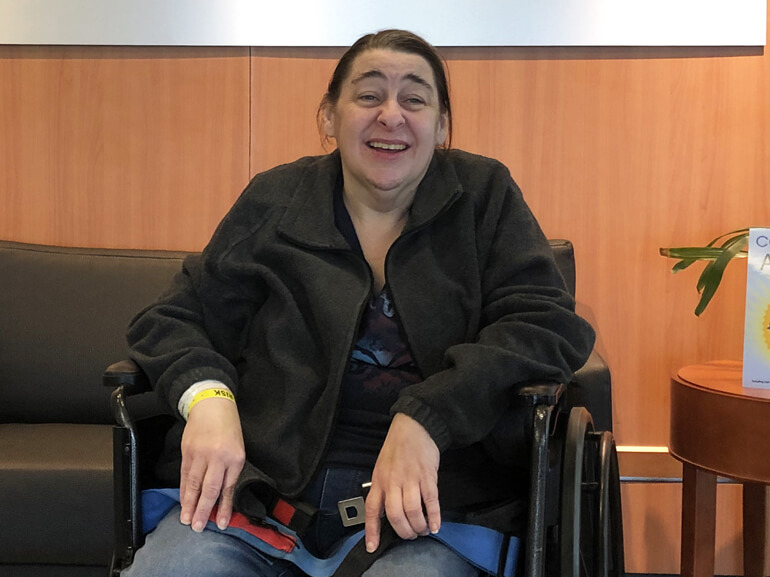Kim's story

A miraculous transformation
Kim Groft’s family was prepared to say their goodbyes.
One January day, Kim’s parents discovered the 45-year-old unconscious on the floor of the home they shared. They rushed her to the hospital, where doctors discovered Kim had a stroke. Complications, including infection, followed. After 14 days, she showed no signs of improvement. The family’s priest administered the Catholic sacrament of last rites. Kim’s breathing and feeding tubes were removed. She was listed on the organ donation registry.
Suddenly – miraculously – Kim opened her eyes and waved at them, transforming her family’s sadness into joyful shock. The medical team raced to perform a battery of tests and restart her feeding tube. Kim’s condition stabilized and she was cleared to participate in medical rehabilitation.
She arrived at Penn State Health Rehabilitation Hospital March 5, nearly two months after her stroke. A physician-led team of nurses and therapists created a comprehensive plan of physical, occupational and speech therapies. Her biggest challenge, however, was dealing with lingering headaches, seizures and bouts of low blood pressure. Her physiatrist, a physician specializing in physical medicine and rehabilitation, customized Kim’s treatment to include anti-seizure and pain medication so she could maximize therapy time.
During physical therapy, she performed strength and endurance exercises, stood for the first time and worked up to walking more than 300 feet.
Kim’s occupational therapists used puzzles in her cognitive and memory strengthening program. Her parents both stated that puzzles were great exercise for Kim, a master of this art who in the past had done several puzzles of trains for her dad to display at home.
In speech therapy, Kim completed mouth and throat exercises to strengthen muscles that prevent food from getting into the lungs while eating. She also received VitalStim® therapy, which uses electrical stimulation to improve muscle function and swallowing. She was eventually able to go from not eating by mouth to consuming a regular diet.
To address Kim’s severe memory and language issues, speech therapists used functional tasks that she would do at home to stimulate memory, sequencing of tasks and problem solving. These included, for example, following steps of a recipe, making a shopping list, talking about navigating where things are found in a store and problem solving (e.g., what to do if you lose your wallet?). She showed drastic improvement but still required a memory book to help recall and retain new information.
Her greatest motivators were regaining independence and being able to drive again. She longed to return to work and her hobbies, such as seeing shows with her mother, quilting and traveling.
“My greatest achievement was coming back from this stroke,” Kim said. “My family has been by my side this whole journey. I have good days and bad days. I take some steps forward and some back. I have achieved so many goals but there are more to go. I’m about 80% there.”
By late March, Kim was ready to go home. She walked out of the hospital on her own, with plans to continue her therapy through home health services and when ready return for additional outpatient rehabilitation services. Kim looks forward to visiting soon and showing her therapists, doctors and nurses how far she has come on her miracle journey.